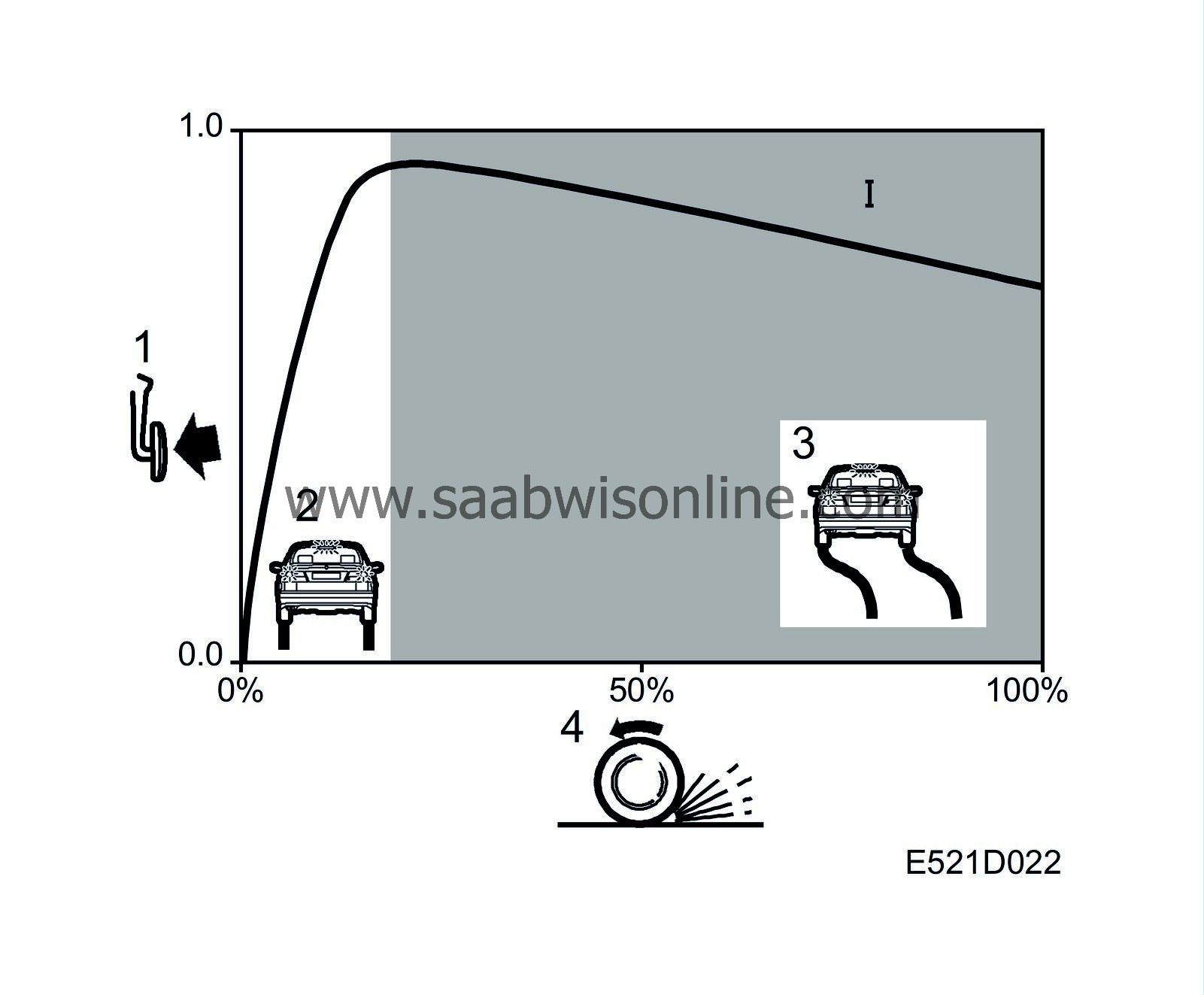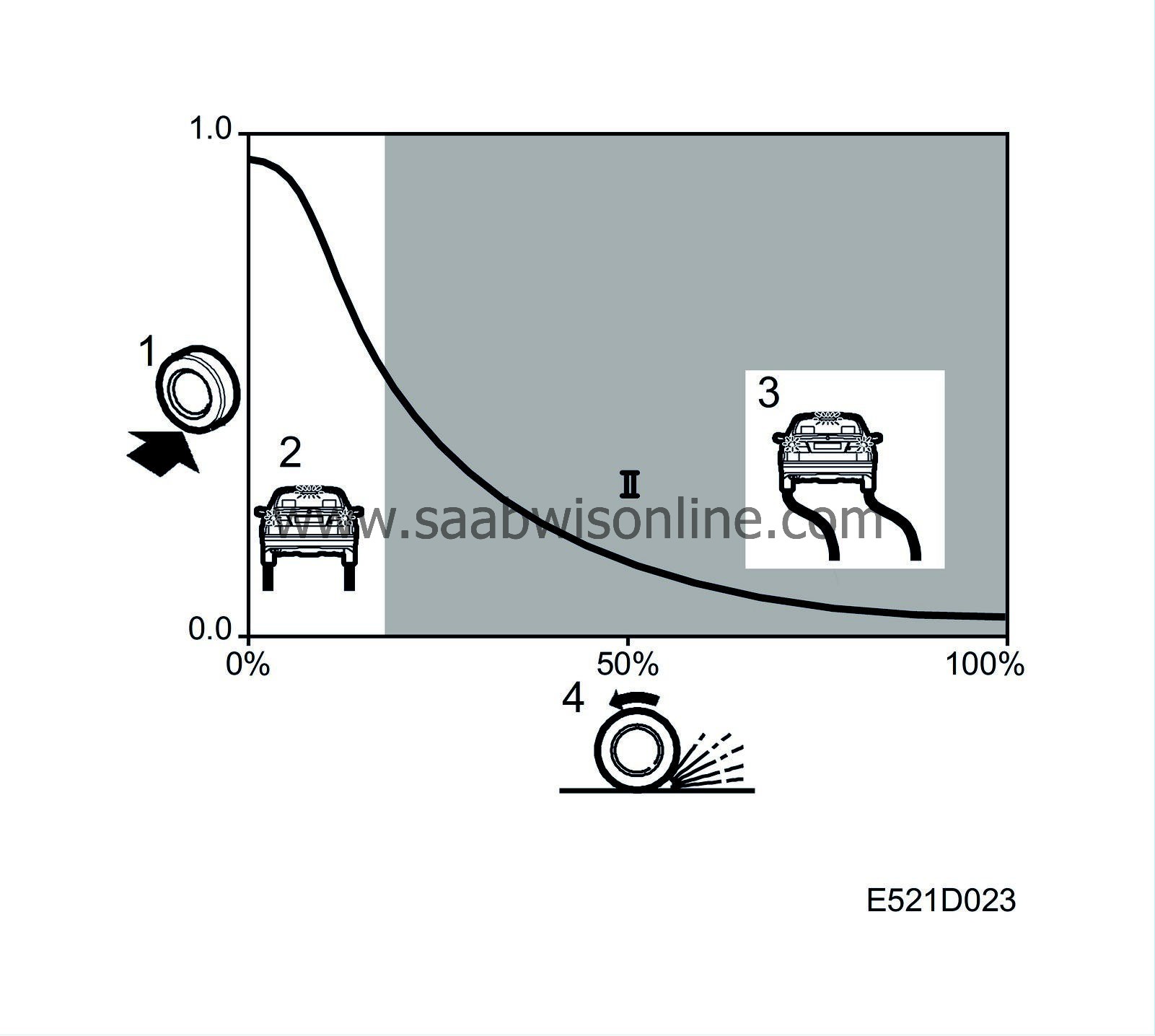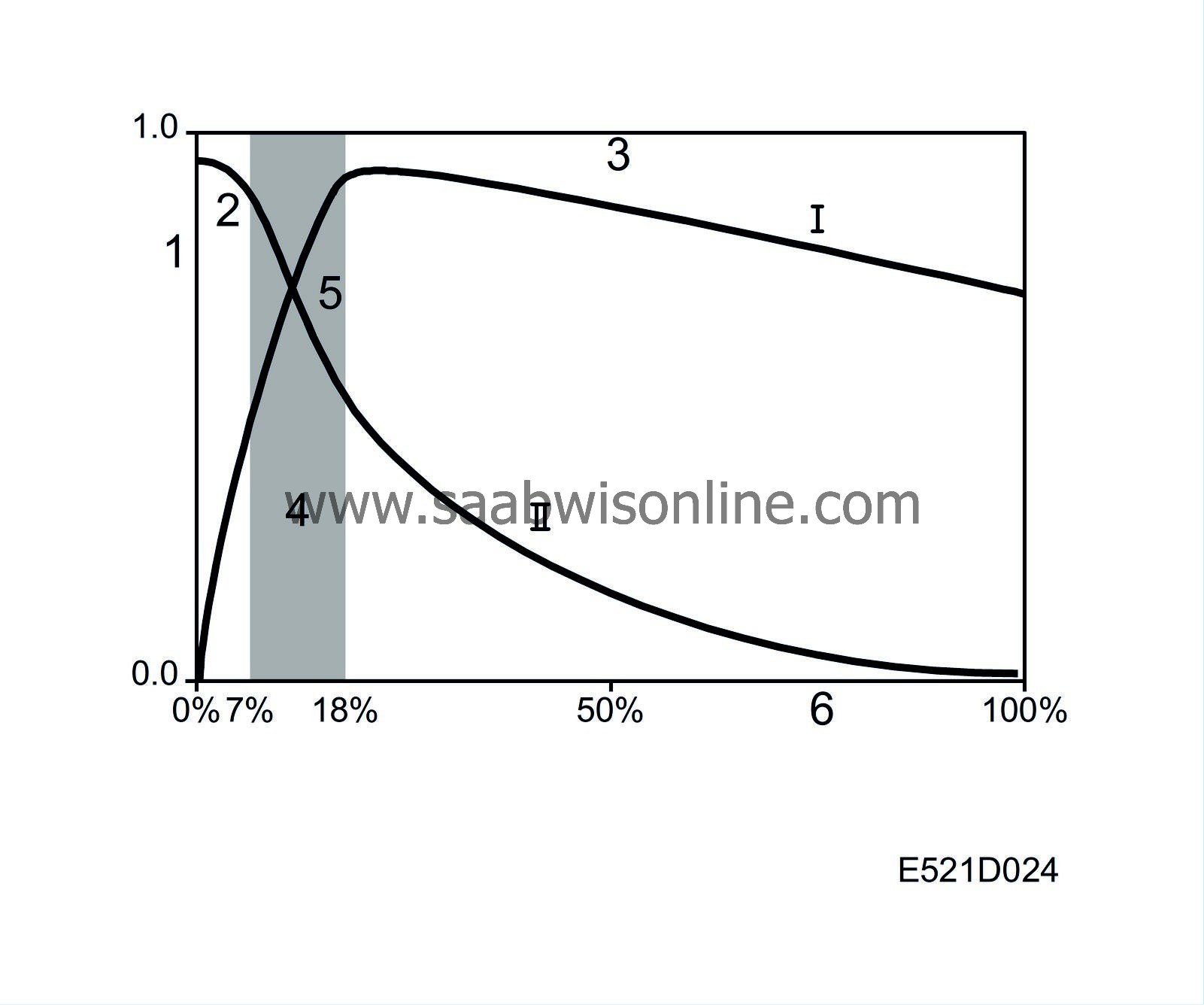
Function
The ABS system provides optimum braking without any
loss of directional stability.


Braking force/tyre slip
Curve I in the above chart shows the braking force as a function of slip.
Vertical axis: Braking force
Horizontal axis: Slip
The braking force is equivalent to the coefficient of
adhesion or the friction between the tyre and the road surface. Each
application of braking force gives rise to a certain degree of slip.
The slip of a freely rotating wheel is expressed as nil (0%) and of a
locked wheel as 100%.
When the brake is first applied at zero slip, braking force increases sharply but the degree of slip increases only gradually up to a certain limit. Beyond that point, braking force decreases with increasing slip.
Lateral force/Slip
Curve II shows lateral force as a function of slip.
Vertical axis: Lateral force
Horizontal axis: Slip
The maximum braking force is reached at a point known as the limit of optimum slip. The section of the curve between zero slip and the limit of optimum slip is called the stable braking zone, and the section of curve between the limit of optimum slip and 100% slip is called the unstable braking zone, as stable braking cannot be achieved within this zone. This is because the wheel quickly becomes locked after the limit of optimum slip has been reached, unless the braking force is immediately reduced.
Slip also occurs when the tyre is called upon to transmit a
lateral force, e.g. on cornering. Curve II shows how the lateral force
falls away sharply with increasing slip. At 100% slip, i.e. when the
wheels have locked up, no lateral force remains for steering and the
driver will no longer be able to control the vehicle.

Both curves are shown on the above graph, and the range
within which the ABS system is operative has been superimposed.
During braking, the system allows braking force to increase to a
point just before the limit of optimum slip and then prevents it from
increasing further. The system then modulates the hydraulic
pressure to keep the braking force as close as possible to the
optimum value (the limit of optimum slip) regardless of how hard
the brake pedal is depressed.
Thus, because the ABS system prevents the degree of slip
from exceeding the limit of optimum slip, the car never enters the
unstable braking zone. At the same time, some lateral force is
preserved to ensure that steering control can be maintained (curve
II).





